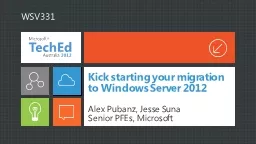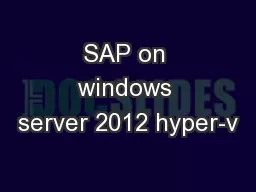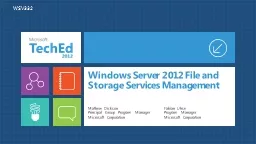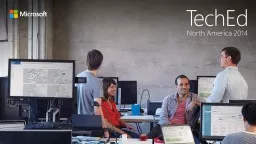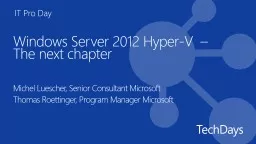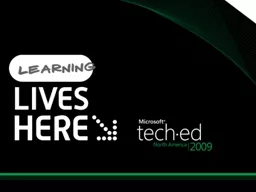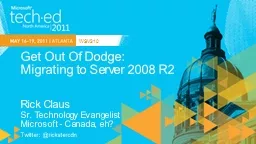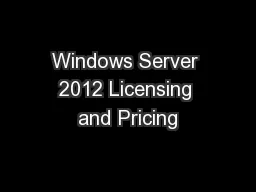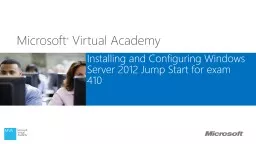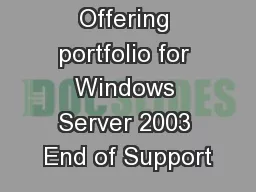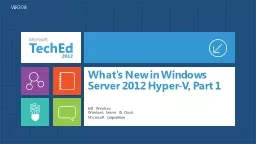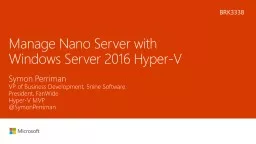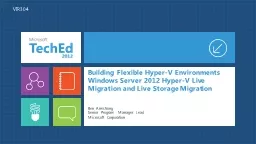PPT-Kick starting your migration to Windows Server 2012
Author : lois-ondreau | Published Date : 2016-05-19
Alex Pubanz Jesse Suna Senior PFEs Microsoft WSV331 Overview everything that will be covered in this session Migrating Active Directory to Windows Server 2012
Presentation Embed Code
Download Presentation
Download Presentation The PPT/PDF document "Kick starting your migration to Windows ..." is the property of its rightful owner. Permission is granted to download and print the materials on this website for personal, non-commercial use only, and to display it on your personal computer provided you do not modify the materials and that you retain all copyright notices contained in the materials. By downloading content from our website, you accept the terms of this agreement.
Kick starting your migration to Windows Server 2012: Transcript
Download Rules Of Document
"Kick starting your migration to Windows Server 2012"The content belongs to its owner. You may download and print it for personal use, without modification, and keep all copyright notices. By downloading, you agree to these terms.
Related Documents

